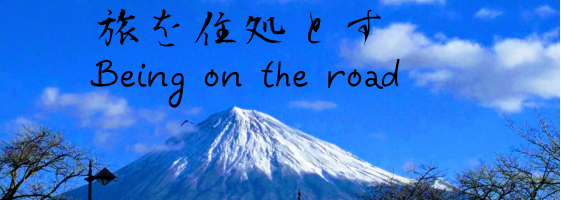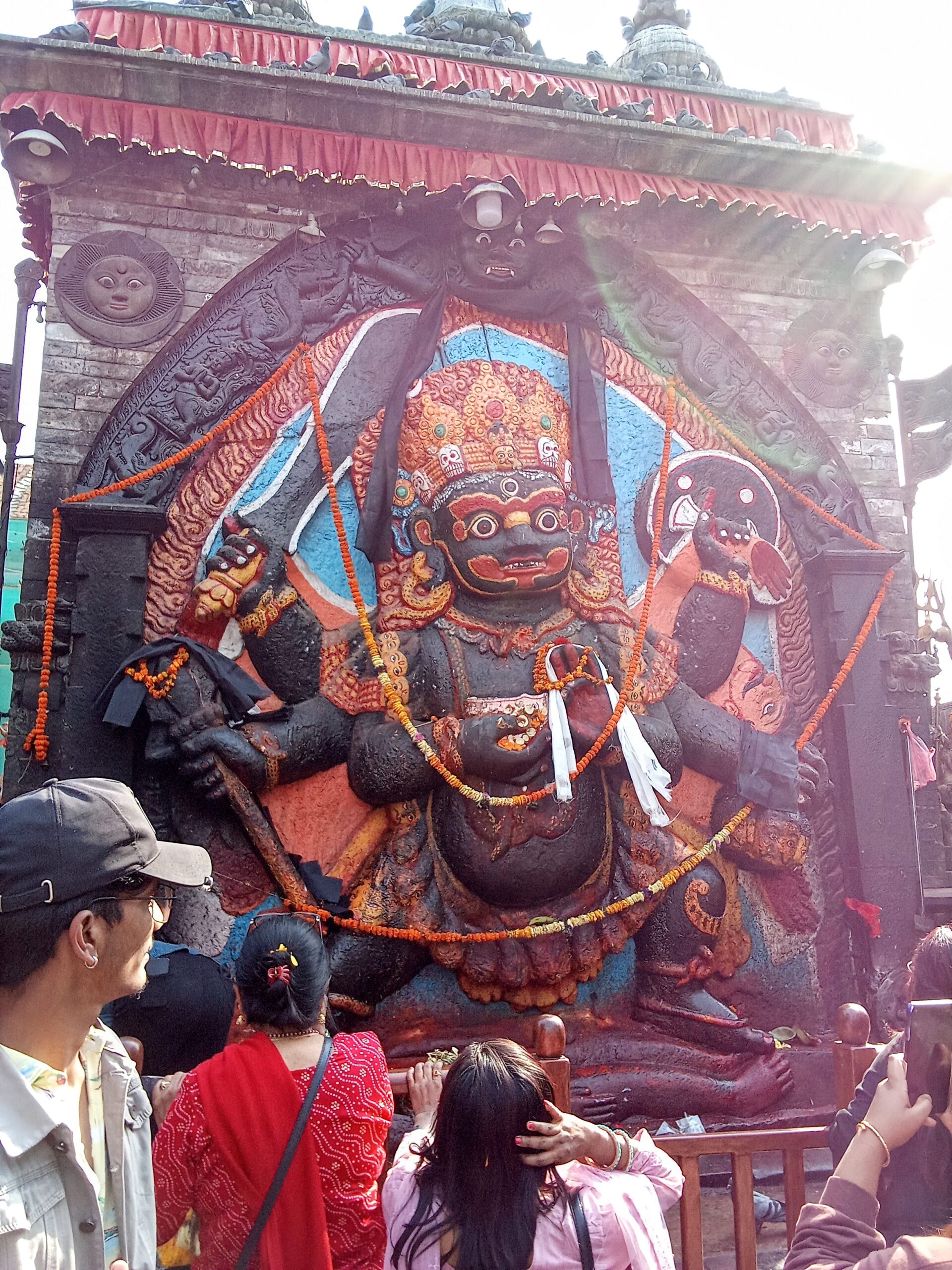Kathmandu, Nepal, boasts many tourist attractions, but its heart is Durbar Square. Registered as a UNESCO World Heritage Site, almost all travelers visiting Kathmandu are likely to visit it at least once. It’s located in the heart of Kathmandu, within walking distance from the Thamel district where many tourists stay. During my visit in March 2024, I went almost every day. This article will share the highlights of Durbar Square, its admission fee, and a “trick” to save money.
Durbar Square
Durbar Square Location
It’s approximately a 30-minute walk due south from the Thamel district, where many tourists stay. Central Kathmandu has many narrow streets and is quite crowded, so if you’re traveling by vehicle, a rickshaw is better than a four-wheeled car. However, be very cautious of unsolicited rickshaws. I recommend walking and enjoying the stroll.
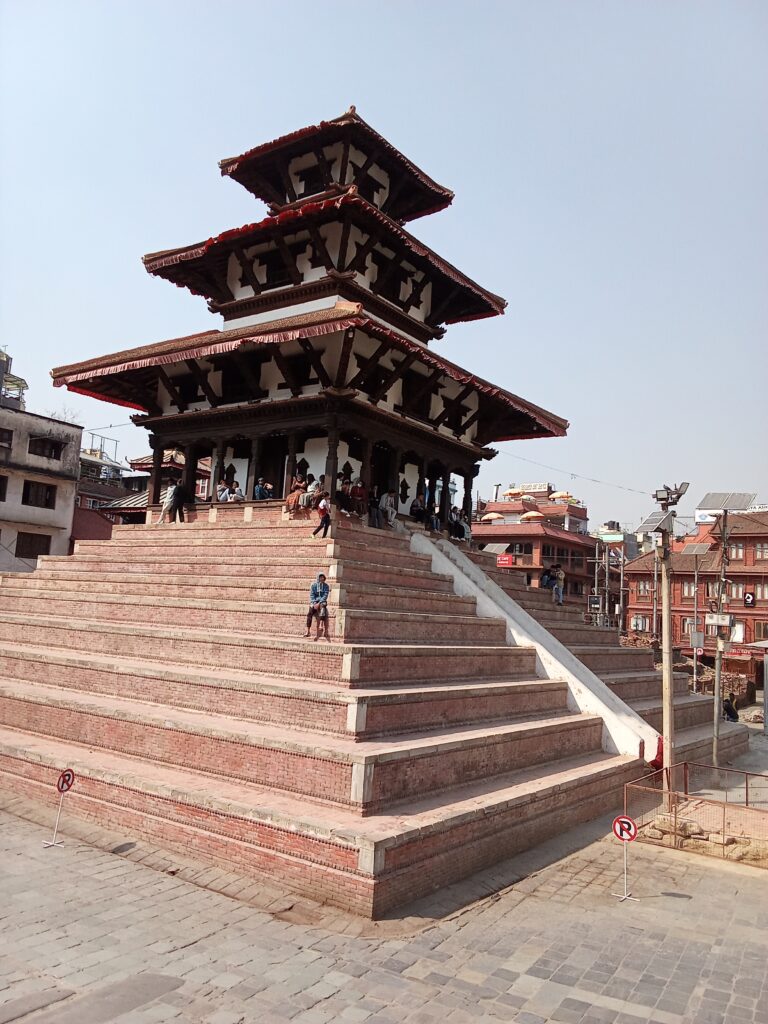
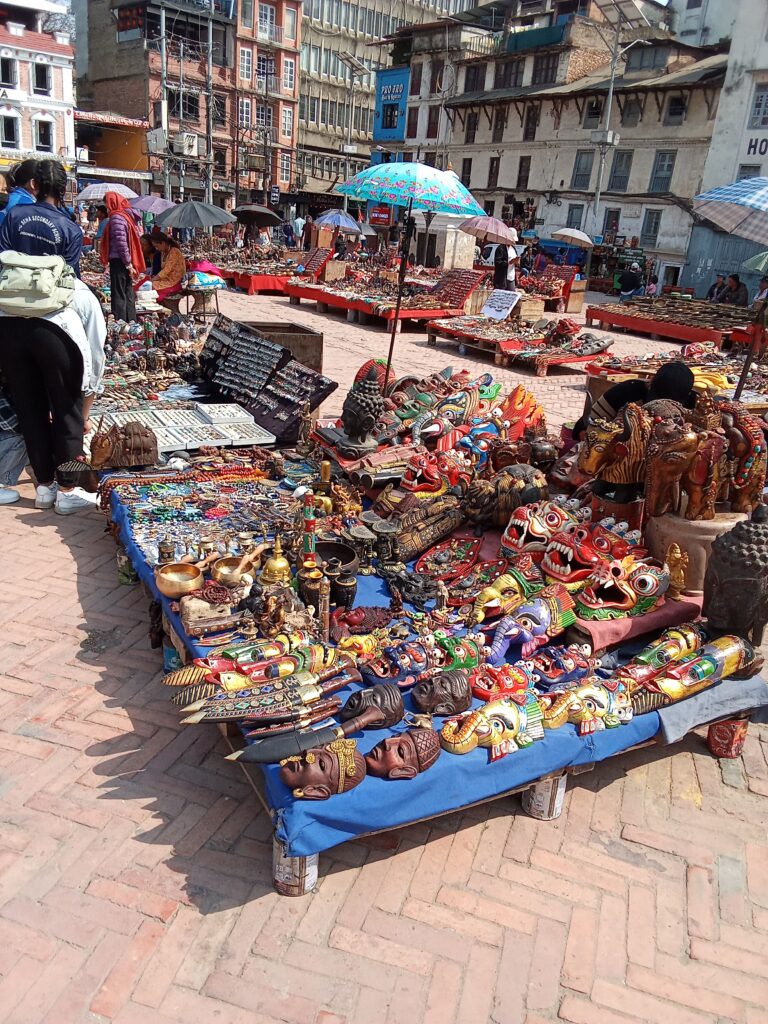
Durbar Square Admission Fee (1000 Rupees)
This was my first visit to Nepal in 30 years, and previously, there was no admission fee for Durbar Square. There are no fences or barriers when entering the square, and many people enter without paying, so I tried to do the same. However, an attendant stopped me and explained that foreigners need to pay an admission fee of 1000 Nepalese Rupees (approx. 1100 JPY). Nepalese citizens are free. It was puzzling how they distinguished foreigners just by appearance, as there are also Tibetan people in Nepal, but I suppose there might be some who slip through.
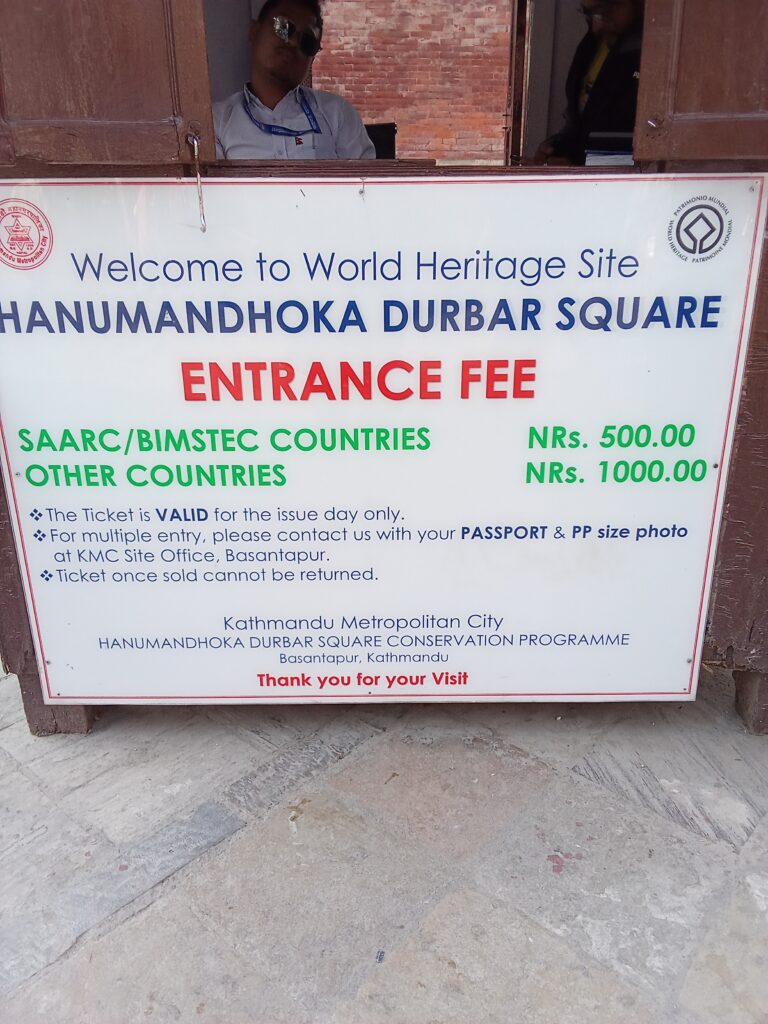
After paying, I was given a large, paper admission pass with a string, which I was instructed to wear around my neck. The color of this paper and string differs daily to help identify people trying to enter with old passes.
Caution: There will be people near the entrance offering to be your guide. Some may even approach you in Japanese. If you decide to hire one, be very careful with price negotiation beforehand. They often try to lead you to souvenir shops, so it’s generally best to ignore them. Completely ignore them without any conversation or refusal.
Admission Fee Trick (Multi-Entry Pass)
This is more of a small note written in the instructions than a “trick,” but the attendants never explain it. It’s information you’d lose out on if you didn’t know. Surprised by the 1000 Rupee price, I persistently asked the attendant about the pass’s validity. I was then led to another building where I was asked for my passport and a photo. After a short wait, I was given a driver’s license-sized paper permit called a “Multi-Entry Pass.” This pass allows unlimited entries for a certain period (mine was valid for one month). Surprisingly, it’s free of charge.
If you don’t look closely at the sign or don’t object to the admission fee, it will be processed as a single-entry pass. However, if you explicitly request it from the attendant, they will issue the multi-entry pass. I used this pass to visit many times during my two-week stay in Kathmandu.
Incidentally, it’s worth noting that the high admission fee is reportedly used for the restoration of temples damaged in the recent Nepal earthquake, which makes the cost more understandable.
Kala Bhairava (Mahakala)
In one corner of Durbar Square, there’s a stone statue where many people gather to worship. This is the Hindu deity Mahakala (Kala Bhairava). “Maha” means great, and “Kala” means black. Mahakala is a wrathful manifestation of the supreme Hindu god Shiva. While the stone statue’s face might appear humorous, he holds a severed head in his hand and wears a necklace made of severed heads.
In Japan, due to the similar sound “Daikoku,” Mahakala is often conflated with Okuninushi-no-Mikoto, but originally, Mahakala and Okuninushi are deities with very different characteristics. Incidentally, Mahakala’s consort deity, Goddess Kali, is also a fearsome deity, and in Hinduism, there are even religious paintings depicting her trampling Shiva. Worshippers continuously visit Kala Bhairava, buying and lighting candles, and handing offerings to attendants who then apply a vermillion mark on their foreheads.
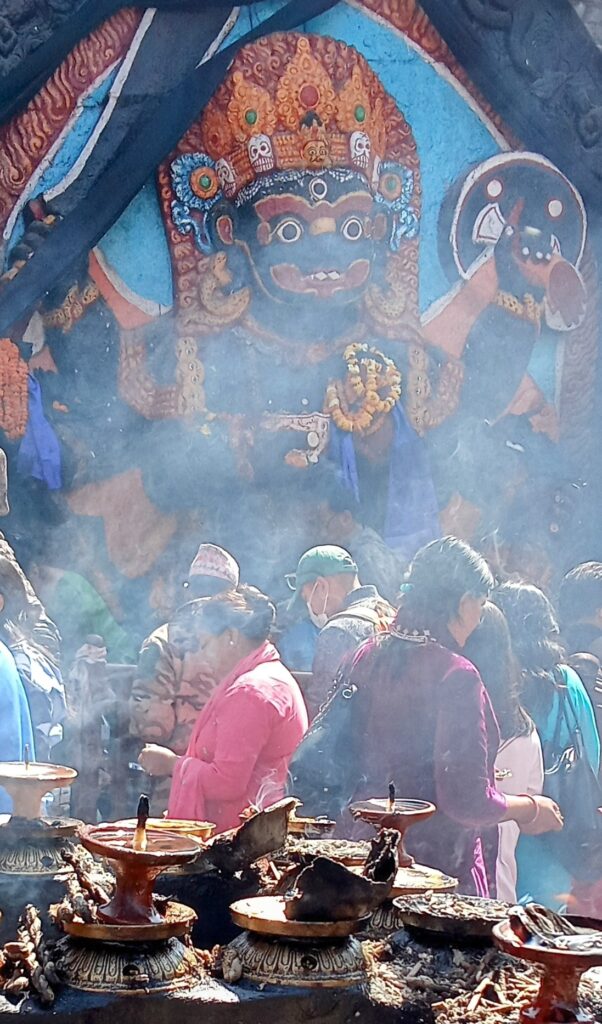
Kumari Ghar (House of the Living Goddess)
In a corner of Durbar Square is the Kumari Ghar, or House of the Living Goddess.
The Living Goddess Kumari
The Kumari Ghar is home to a young girl known as the Kumari, who is revered as a living goddess in Nepal. The Kumari is considered a divine incarnation, and even former Nepalese kings would prostrate themselves before her. A Kumari is chosen from young girls, and when she experiences her first menstruation, it’s believed that her mystical power is lost, and she retires, with a new Kumari taking her place. The current Kumari was chosen in 2017.
The Kumari rarely goes out except on special occasions. If you pay an observation fee, she may show her face at a window for a few seconds, but photography is strictly prohibited. After retiring as a Kumari, she returns to her family home, but it is said that former Kumaris often struggle to adapt to ordinary society and face misfortune. A documentary about this was produced by NHK (Asia Human Highway, 2002).
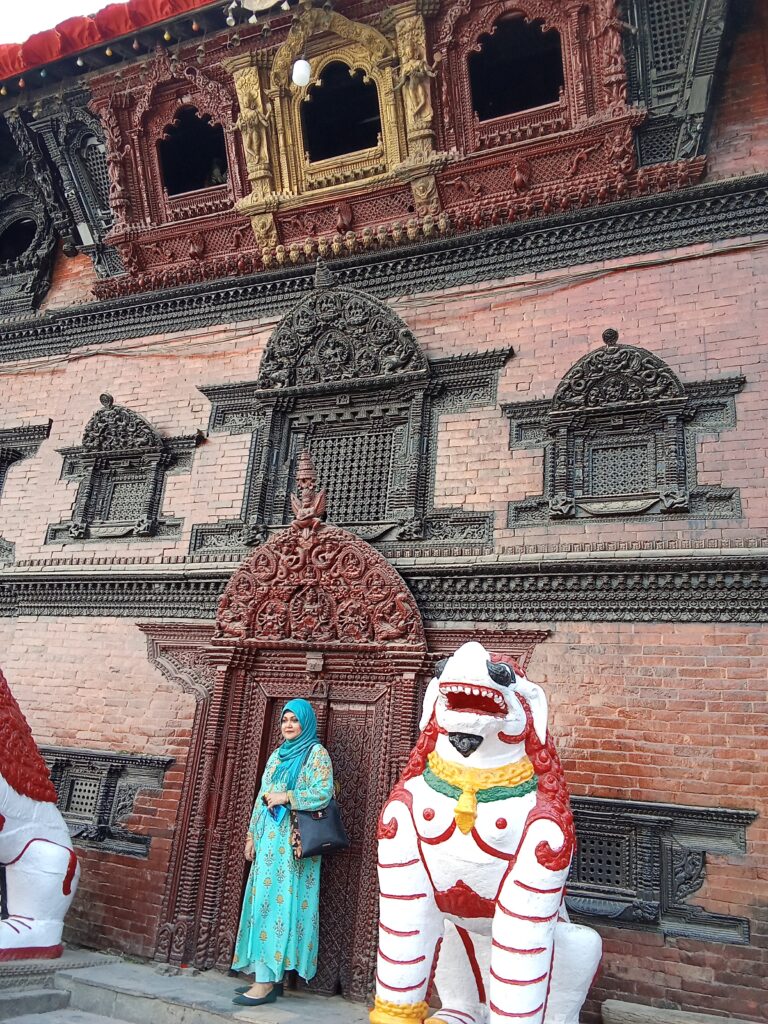
Conclusion
Kathmandu has numerous tourist attractions around the city, and Durbar Square serves as a central hub for exploring them. If you have the chance to visit Kathmandu, I highly recommend going. If you plan to visit multiple times, be sure to utilize the Multi-Entry Pass.
